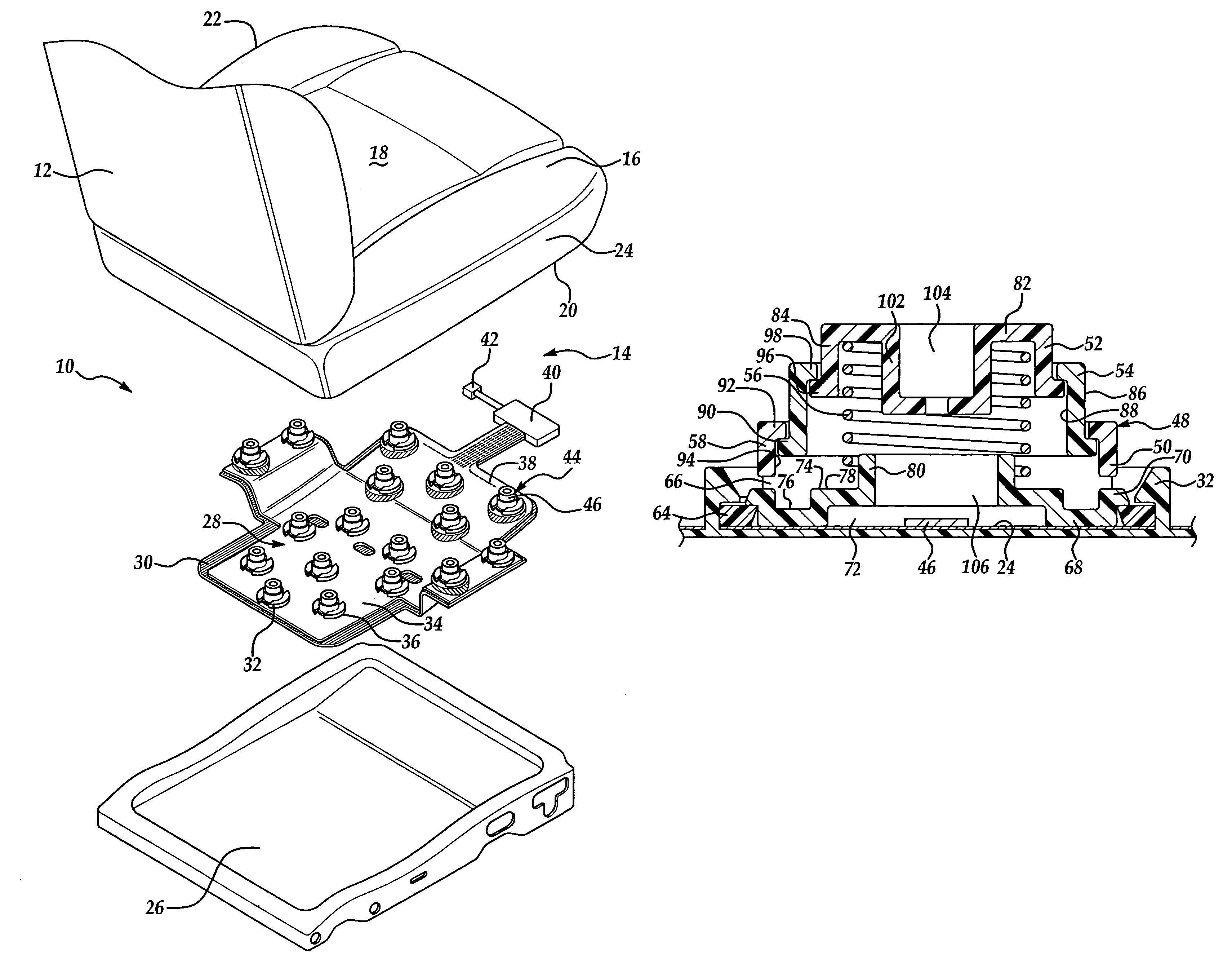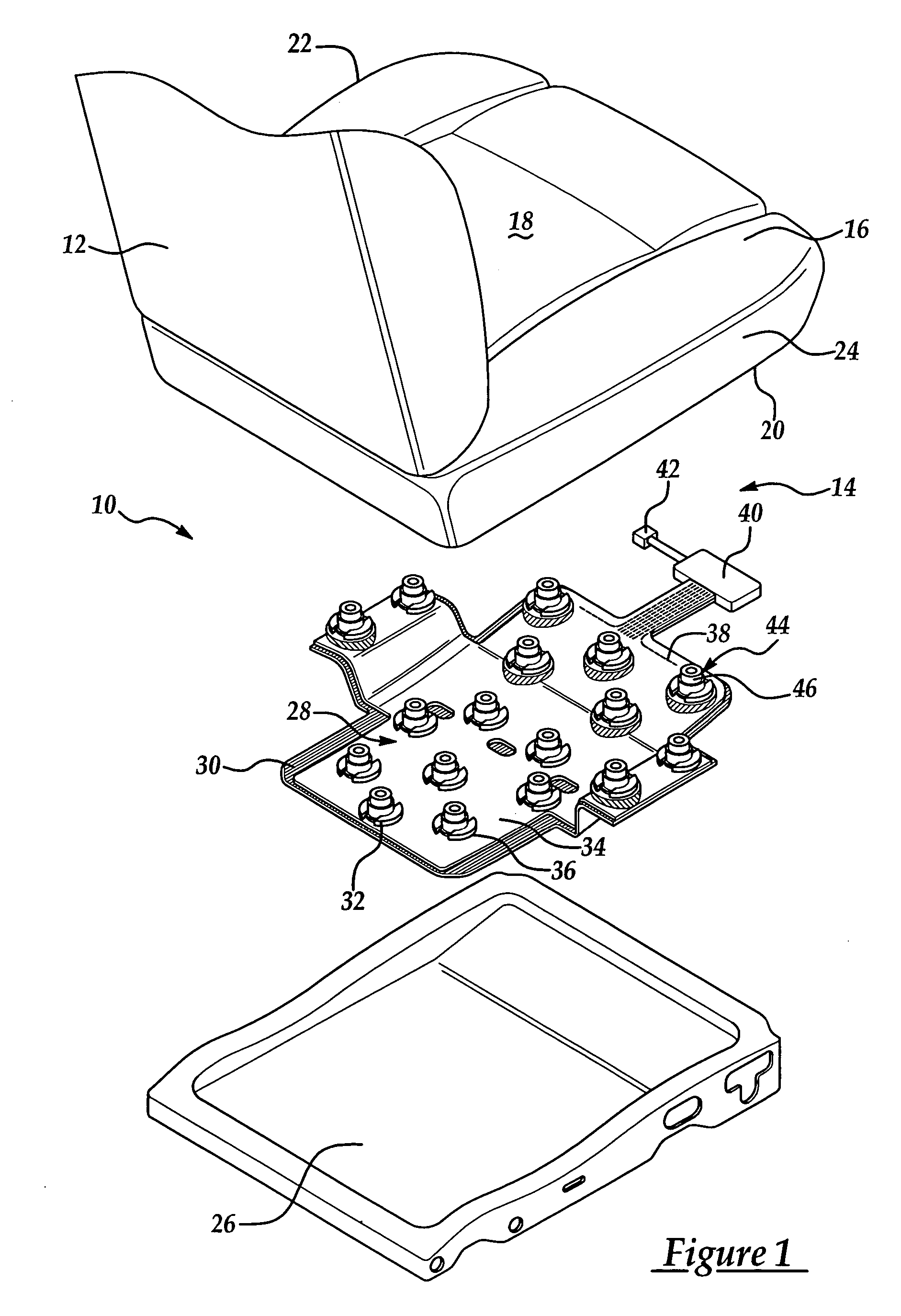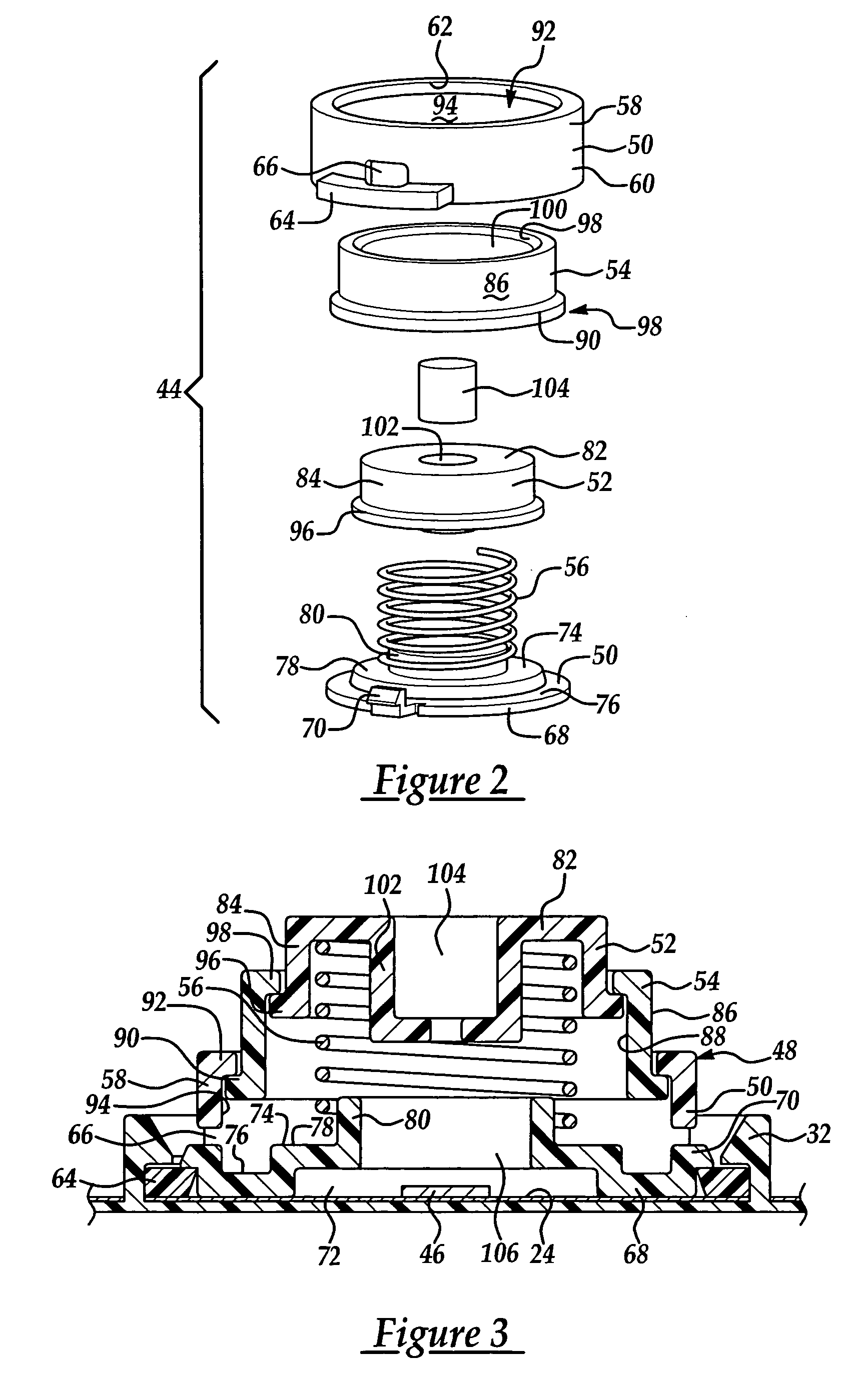Vehicle occupant sensing system having an upper slide member with an emitter interference member
a technology of emitter interference and vehicle occupants, which is applied in the direction of pedestrian/occupant safety arrangements, instruments, chairs, etc., can solve the problems of increased deployment force and speed required to restrain a one hundred eighty-pound male, high cost of supplemental inflatable restraints and their associated deployment systems, and increased deployment costs. , to achieve the effect of extending the operational life of vehicle occupant sensing systems, reducing the number of occupants, and ensuring safety
- Summary
- Abstract
- Description
- Claims
- Application Information
AI Technical Summary
Benefits of technology
Problems solved by technology
Method used
Image
Examples
second embodiment
[0058]Turning now to FIGS. 5 through 7, a low profile sensor assembly is generally indicated at 244 where like numerals increased by 200 are used to designate like structure with respect to the embodiment illustrated in FIGS. 2 through 4. The sensor assembly 244 can be included in the vehicle seat assembly 10 of FIG. 1.
[0059]As shown, the low profile sensor assembly 244 comprises a housing 248. The housing 248 includes a base 250 having an attached base guide 258 and a retainer 268. The low profile sensor assembly 244 also includes an upper slide member 252 supported for movement toward and away from the base 250. Specifically, the upper slide member 252 is sized to slidably move in an axial direction through a bore 262 of the base 250. The sensor assembly 244 also includes a biasing member 256 extending between the base 250 and the upper slide member 252. As in the preferred embodiment illustrated in FIG. 1-4, the biasing member 256 employed in the embodiment illustrated in FIG. 5-...
third embodiment
[0067]Turning now to FIG. 8, a sensor assembly is generally indicated at 444 where like numerals increased by 400 are used to designate like structure with respect to the embodiment illustrated in FIGS. 2 through 4. The sensor assembly 444 may be employed with the vehicle occupant sensing system 28 to detect a condition of the vehicle seat assembly 10 of FIG. 1.
[0068]As shown, the sensor assembly 444 includes a base 450, which is similar to the base 50 described above in relation to FIGS. 2-4. The base 450 includes a base guide 458, which defines a bore 462 extending axially therethrough. The base 450 also includes an upper flange 498 extending radially outward from the upper end of the base guide 458. Furthermore, the sensor assembly 444 includes an upper slide member 452, which is moveably attached to the base 450. The upper slide member 452 includes a circular upper disc portion 482 and a support wall 484 extending downward from the periphery of the upper disc portion 482. The di...
PUM
 Login to View More
Login to View More Abstract
Description
Claims
Application Information
 Login to View More
Login to View More - R&D
- Intellectual Property
- Life Sciences
- Materials
- Tech Scout
- Unparalleled Data Quality
- Higher Quality Content
- 60% Fewer Hallucinations
Browse by: Latest US Patents, China's latest patents, Technical Efficacy Thesaurus, Application Domain, Technology Topic, Popular Technical Reports.
© 2025 PatSnap. All rights reserved.Legal|Privacy policy|Modern Slavery Act Transparency Statement|Sitemap|About US| Contact US: help@patsnap.com



